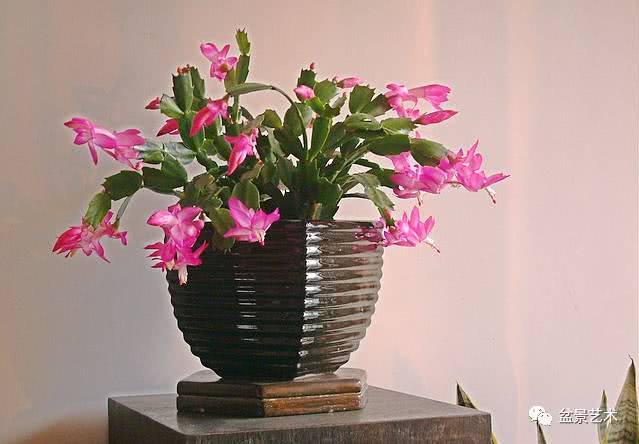Grafting of crab claw orchid

Crab claw orchid is native to Brazil and belongs to the cactus family. Stem overhanging branched, flattened, nodes Obovate to oblong, connected into crab claw shape. Crab claw orchid generally blossoms from January to March, the flowering period is longer, when the flower is delicate and beautiful, it is lovable.
The propagation of crab claw orchid is easy, the growth of cutting propagation is slow, and the flowering is late, so it is often propagated by grafting. The grafting time is generally from April to August, but according to the author's experience, it is better before the end of June to increase the stem and leaf growth and flowering number in the same year after grafting.
Grafting rootstocks, often choose cactus or trigonous (some people call Haiwang) and so on. The rootstock should be more than 20 cm higher than the basin to facilitate later drape. If the rootstock is about 100 cm high, it can be connected with 4-5 layers to form a multi-layer umbrella-shaped overhanging plant, which is more beautiful. Scion not too tender, 4-5 stem nodes into a section, with a sterilized knife or blade on each side of the lower end of the scion oblique cut one knife, shaped like a duck beak, cut not more than half of a stem node. Then cut the rootstock slightly obliquely and longitudinally, the incision is slightly longer than the xylem of the scion and the rootstock, and then immediately insert the rootstock cut to the xylem. After the joint, the joint is pinched by hand and clamped with a wooden clip or fixed with a needle or thorn to prevent the scion from slipping out.
Put it in a cool and ventilated place after grafting, do not water within a week, and the interface can not be watered. After 10 days, the scion remains green and stiff, which proves that it has survived and can be maintained normally.
- Prev

Conservation of Pearl Plum
Pearl plum has strong adaptability and low requirements for fertilizer. except for newly planted plants, they do not need to apply a small amount of base fertilizer, but they need to be watered. Generally, they are watered for 3 times from leaf bud germination to flowering, and the Beginning of Autumn for 2 times from post-frost to frost.
- Next

Key points of cultivation techniques of Metasequoia glyptostroboides
1. Ecological habits: Metasequoia glyptostroboides is a large deciduous tree of Cunninghamia lanceolata of Taxodiaceae. Originated in China, it is a relic plant and living fossil in ancient times, and it is one of the key trees protected by the state. Metasequoia glyptostroboides like sunshine, cold-resistant, shade-resistant, adaptable and deep in soil layer.
Related
- Wuhan Hospital Iron Tree Blooming Result Was Instantly Frightened by the Gardener Master
- Which variety of camellia is the most fragrant and best? Which one do you like best?
- What is the small blue coat, the breeding methods and matters needing attention of the succulent plant
- Dormancy time and maintenance management of succulent plants during dormancy
- Minas succulent how to raise, Minas succulent plant pictures
- What are the varieties of winter succulent plants
- How to raise succulent plants in twelve rolls? let's take a look at some experience of breeding twelve rolls.
- Attention should be paid to water control for succulent plants during dormant period (winter and summer)
- Watering experience of twelve rolls of succulent plants
- Techniques for fertilizing succulent plants. An article will let you know how to fertilize succulent plants.

